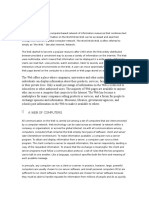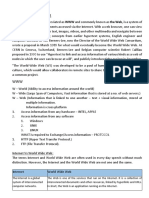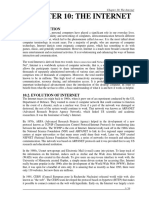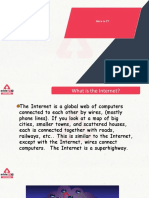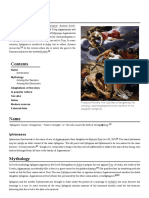0% found this document useful (0 votes)
20 views3 pagesDatabase
Database access through the Web is achieved through middleware that links webservers to databases and other services. The World Wide Web originated in 1990 at CERN to allow scientists to share biological information and has grown tremendously, now containing hundreds of millions of web pages. Information is stored on web servers in files encoded with HTML and accessed via URLs, with popular browsers like Internet Explorer and Netscape Navigator interpreting and presenting the pages.
Uploaded by
Habtamu Berihun AlemieCopyright
© © All Rights Reserved
We take content rights seriously. If you suspect this is your content, claim it here.
Available Formats
Download as RTF, PDF, TXT or read online on Scribd
0% found this document useful (0 votes)
20 views3 pagesDatabase
Database access through the Web is achieved through middleware that links webservers to databases and other services. The World Wide Web originated in 1990 at CERN to allow scientists to share biological information and has grown tremendously, now containing hundreds of millions of web pages. Information is stored on web servers in files encoded with HTML and accessed via URLs, with popular browsers like Internet Explorer and Netscape Navigator interpreting and presenting the pages.
Uploaded by
Habtamu Berihun AlemieCopyright
© © All Rights Reserved
We take content rights seriously. If you suspect this is your content, claim it here.
Available Formats
Download as RTF, PDF, TXT or read online on Scribd
/ 3



















